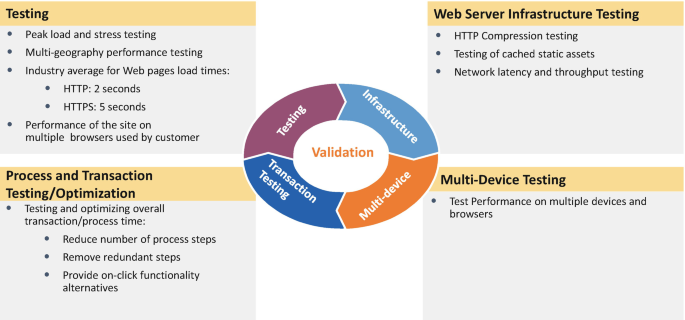Tube Rank: Your Guide to Video Success
Discover tips and insights for optimizing your video presence.
Web Performance Makeover: Revamp Your Site in a Snap
Transform your website in no time! Discover quick tips for a stunning web performance makeover and boost your traffic now!
Top 10 Quick Fixes to Boost Your Website's Load Speed
When it comes to improving your website's performance, speed is a critical factor that can significantly impact user experience and search engine rankings. Here are Top 10 Quick Fixes to Boost Your Website's Load Speed that you can implement right away.
- Optimize Images: Ensure your images are properly compressed and resized. Large image files can slow down your page load time significantly.
- Minify CSS and JavaScript: Remove unnecessary characters from your code to reduce file sizes without affecting functionality.
- Leverage Browser Caching: This allows frequently accessed files to be stored in the user's browser, speeding up subsequent visits.
- Enable Compression: Use Gzip compression to reduce the size of your files before they're sent to the user's browser.
- Reduce Server Response Time: Optimize your server performance to ensure a swift response for user requests.
- Use Content Delivery Networks (CDNs): CDNs can distribute your content across various servers worldwide, speeding up load times.
- Limit Redirects: Each redirect can add additional wait time, so keep them to a minimum.
- Implement Lazy Loading: Load images and content as they come into view instead of all at once, enhancing initial load speed.
- Optimize Your Database: Regular maintenance of your database can boost performance significantly.
- Choose a Reliable Hosting Provider: A solid hosting service can make a world of difference in load speed.

How to Analyze Your Website's Performance: A Step-by-Step Guide
Analyzing your website's performance is crucial for understanding how well it meets your goals and objectives. Start by identifying your key performance indicators (KPIs), such as traffic, bounce rate, and conversion rate. Once you have established these metrics, you can use tools like Google Analytics or other performance monitoring software to collect data. Track these parameters over time to gain insights into user behavior and engagement. By evaluating this data, you can identify trends, strengths, and weaknesses, allowing you to make informed decisions to enhance your site's efficacy.
After collecting and reviewing your performance data, it's essential to conduct a thorough analysis. Begin by creating an ordered list of areas that need improvement, such as page loading speed, mobile optimization, or user interface design. Next, carry out A/B testing to assess different elements of your site and see which versions lead to better performance outcomes. Remember to regularly revisit your performance analysis and adjust your strategies accordingly to ensure continuous improvement. By following these steps, you can effectively analyze and enhance your website's performance, ensuring it meets the evolving needs of your audience.
Is Your Site Sluggish? Discover Easy Ways to Enhance User Experience
Is your site sluggish? A slow-loading website can frustrate visitors and lead to high bounce rates, significantly impacting user experience and SEO rankings. To enhance user experience, start by optimizing images and reducing their file sizes without losing quality. Additionally, consider leveraging browser caching to speed up the load time for returning visitors. A fast website not only keeps users engaged but also encourages them to explore more of your content, increasing the chances of conversions.
Another effective strategy is to minimize HTTP requests. Combine CSS and JavaScript files where possible to streamline the loading process. Implementing a Content Delivery Network (CDN) can also dramatically improve site speed by distributing content closer to users' geographic locations. Remember, a seamless user experience is vital for retaining visitors; a sluggish site may turn them away for good. Evaluate your current performance metrics and implement these changes to watch your engagement rates soar!